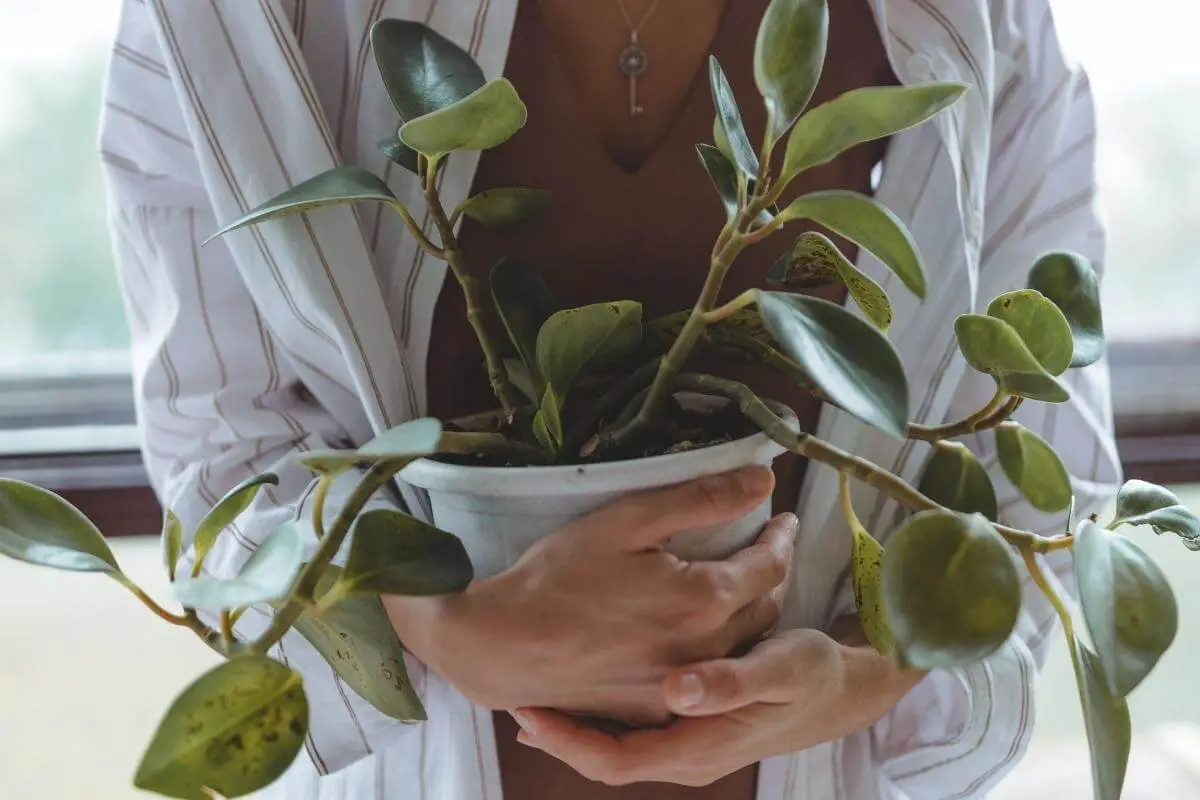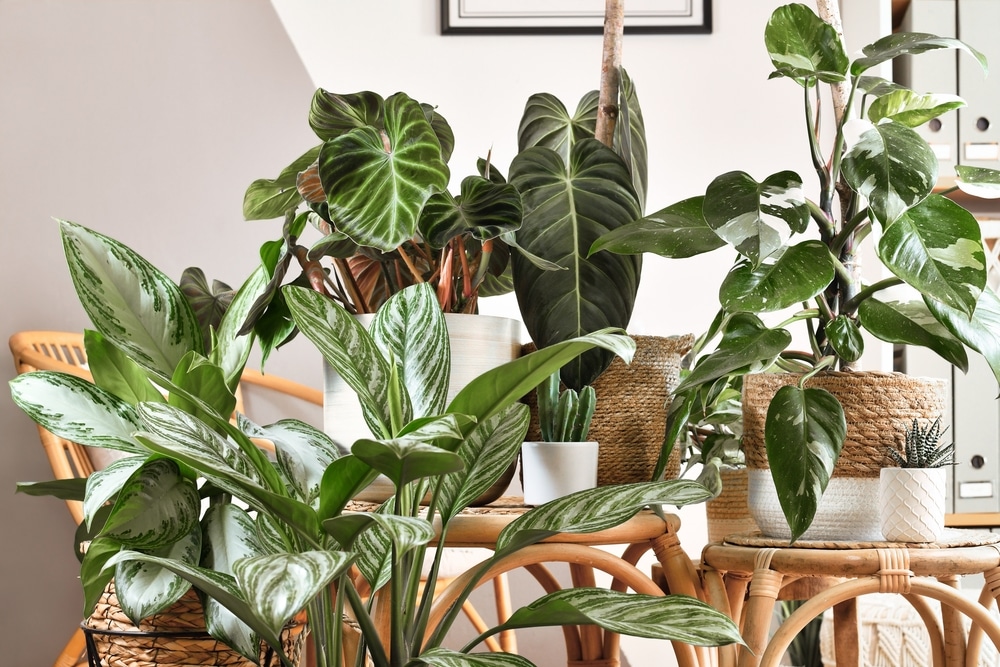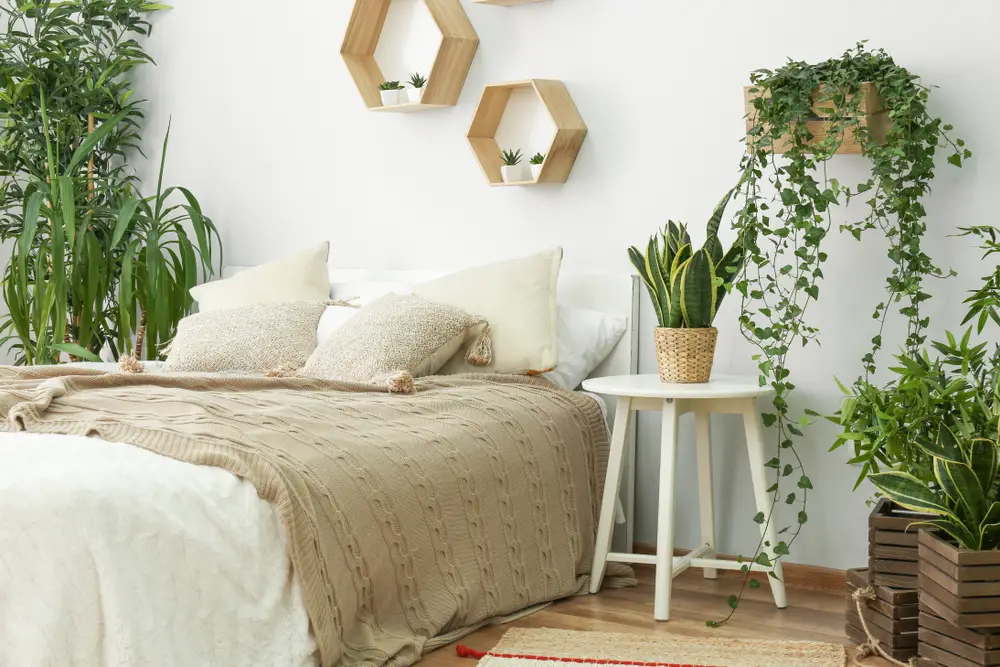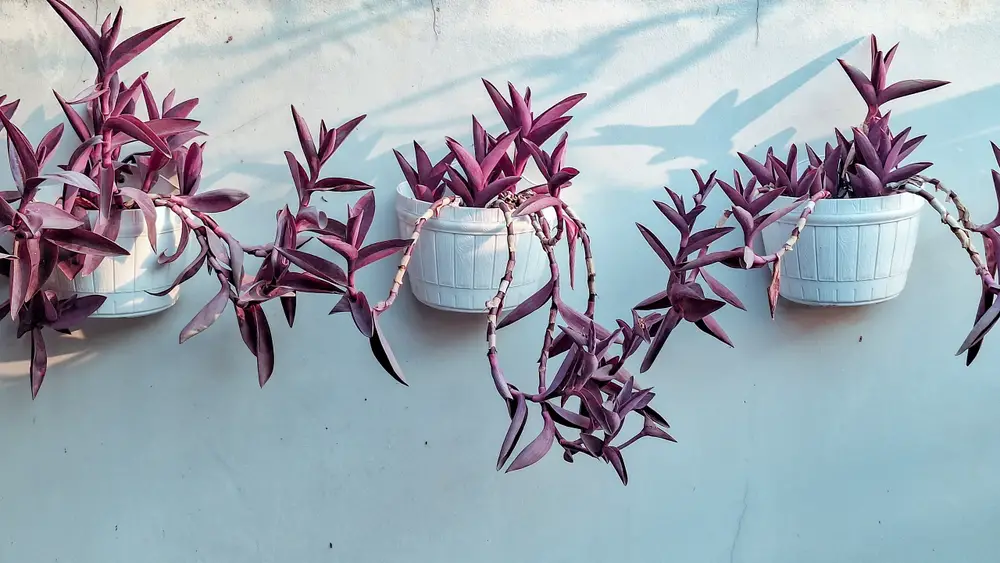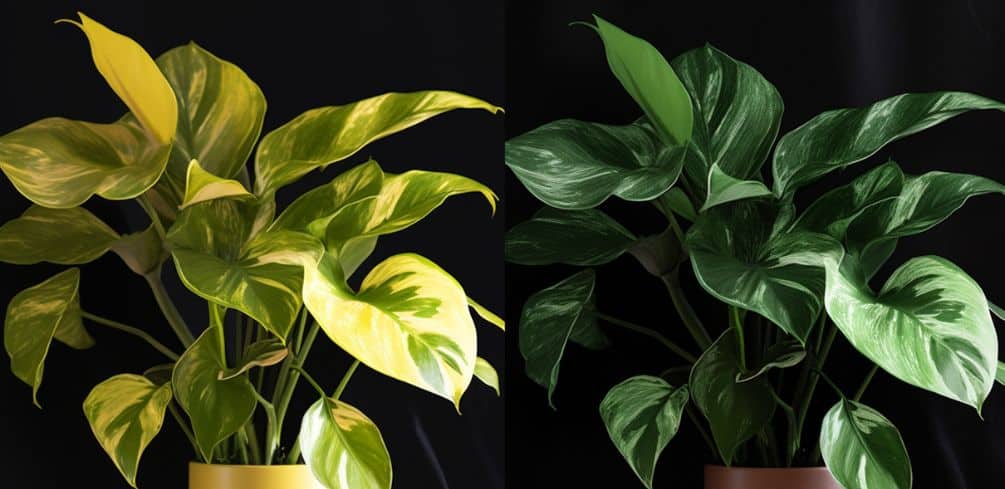If your planter has large drain holes, adding a barrier between the holes and the soil is necessary.
This will not only keep the roots from growing through the holes but also hold the soil in place and prevent it from falling.
One of the best ways to separate the holes from the soil is to add mulch in the bottom of your planter.
Keep on reading to learn more!
Putting Mulch in the Bottom of Your Planter: Is It a Good Idea?
Adding some mulch to the bottom of your planter can be a great way to improve drainage. Not to mention, you’ll need less soil to fill the pot. Mulch also protects the roots from the negative effects of sunlight and decomposes and releases nutrients into the soil. It also maximizes water retention, which can be quite beneficial in drought-like conditions.
What Kind of Mulch Is Best for Potted Plants?
Generally speaking, there are two types of mulch:
- natural
- artificial
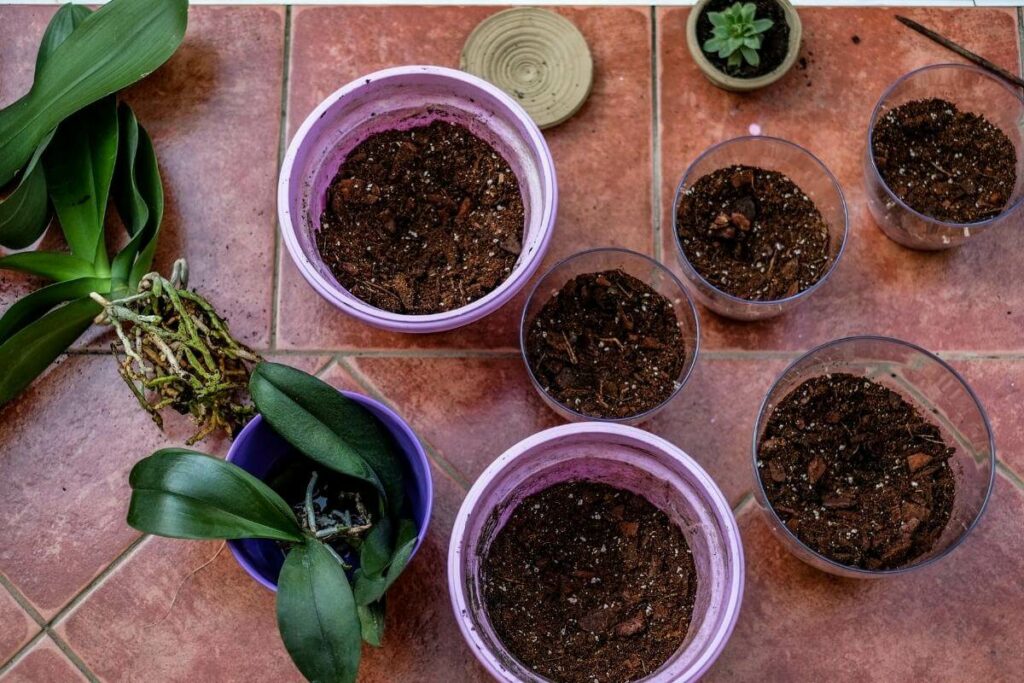
Natural Mulches
Natural mulches work great for indoor plants.
They also double as an additional source of food for the plants when they break down.
These are the best types of natural mulch that can be added to indoor potted plants:
- Wood Chips: You can either buy wood chips from home improvement stores or local garden centers. If you decide to make some DIY wood chips, avoid using wood that has fungi all over it.
- Grass Clippings: Grass clippings must be dried thoroughly in the sun before you add them to your planter.
- Dried Leaves: You can use dried leaves as mulch, provided that they’re clean and 100% dry. It’s also important that you shred them before adding them to the pot.
- Paper: Shredded paper from newspapers and books can be added to potted plants as mulch.
- Moss: Spanish moss can make an excellent mulch for potted plants that don’t get exposed to direct sunlight all day.
- Hemp: Hemp has good weed-suppressing properties, making it a good choice for mulching potted plants.
- Coconut Coir: Similar to wood chips and leaves, coconut coir breaks down over time and can be consumed by plants.
- Pine Needles: Dried pine needles take a long time to decompose, which can be a good thing for the health of your plants.
Artificial Mulches
Artificial mulches, like pebbles, pecan shells, and marbles, are better for outdoor plants since they’re heavier.
However, keep in mind that pebbles may get accidentally mixed into the soil, so be extra careful during repotting to prevent this.
How to Add Mulch to Your Potted Plants?
If you decide to add mulch, make sure that it’s at least 2-3” deep.
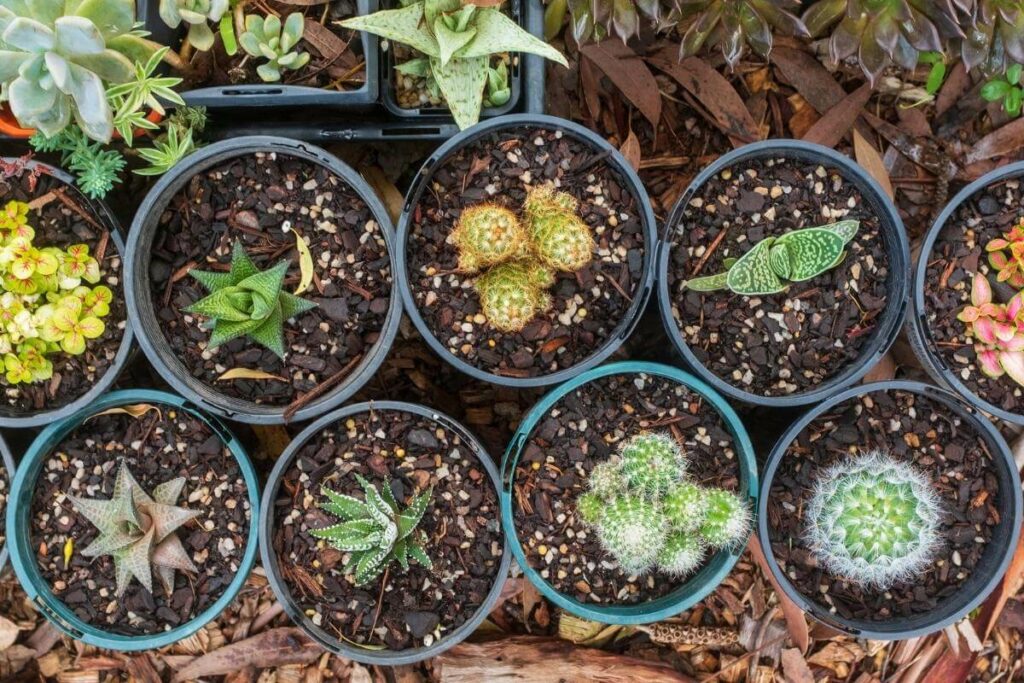
It should also be on top of the soil, not on it.
This way, your plants will still be able to get the nutrients they need, even with the mulch in place.
Additionally, you need to cover the bottom of the pot evenly and fill it with soil.
In some cases, you might need to add a liner, especially if you’re not using a potting medium.
You also need to keep mulch at least 3 inches away from stems for extra protection.
Adding Drain Holes to Your Planters
If your planters don’t have any drain holes to start with, putting mulch at the bottom would be almost useless.
So before adding mulch, make sure that your planter has at least one drain hole.
Try This: One way to add drain holes to your pots without cracking them is to put duct tape on the two sides of the container and drill the hole through the tape. You can then remove the tape after you’re done.
How to Water Mulched Potted Plants?
Mulched plants are usually more prone to overwatering.
However, this issue can be easily avoided with a few tricks.
One way to prevent overwatering is to simply move the mulch aside to see the soil when watering the plants. You should also factor in the size of the pot and the plant.
Plus, large potted plants would require more watering than smaller ones.
Nevertheless, you still need to make sure that the pot doesn’t get a chance to dry out completely.
When Should You Mulch Potted Plants?
As a general rule of thumb, you should mulch potted plants only when they’re at least 3-5 inches tall.
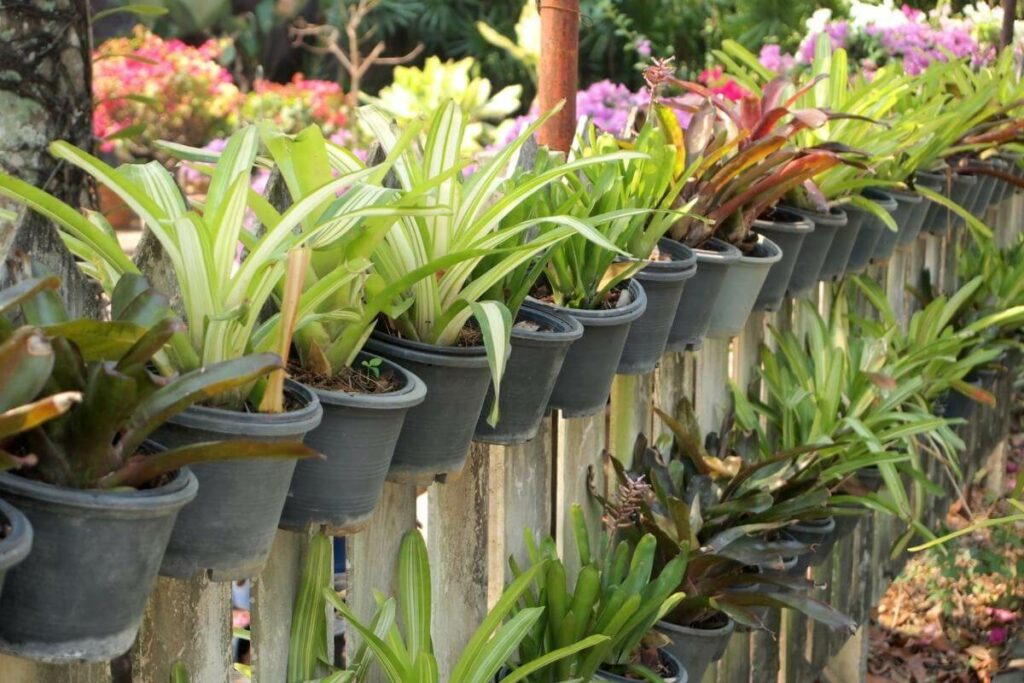
If you’ve just planted the seeds, adding mulch would be a surefire way to inhibit the growth of the plants.
This is one of the last things you’d want to do at the start of this process.
Also, keep in mind that you need to remove the mulch when the growing season is over.
Of course, this only applies if the mulch remains in good condition throughout the whole season.
Look Out: If you start noticing that fungi are growing on it, remove the mulch as soon as possible.
Tips to Maintain Your Container Garden
Along with adding mulch to the bottom of your planters, here are a few extra tips to keep your container garden in its best shape:
- Clean your pots with a bleach/water solution a few times a year
- Use the right plants for each location in your house based on sunlight exposure
- Don’t bury the crowns of your plants in the soil to prevent them from rotting
- Use some foliage plants to add variety and texture to your container garden
- Minimize the space between pots for more impact
- Use roofing tar to paint the interior of terra cotta pots and protect them from cracking in winter
- Use small stands or bricks to elevate the pots and improve drainage
Final Thoughts
So that was a quick overview of why adding mulch to the bottom of your planters is the best way to go.
It can be quite beneficial to your garden since you’ll require less soil, and drainage will be much more effective.
Adding mulch will also make your planters look more aesthetically pleasing.
So, what are you waiting for? Add some mulch to your planters and get the garden of your dreams!
Also Useful
- Your Complete Guide to Growing Jade Plants
- Why Are My Sage Leaves Turning Black?
- 10 Plants That Don’t Like Mushroom Compost
- Philodendron Care, Varieties, And Aesthetic Home Arrangements
- Best House Plants for Low Light – Thriving Indoors with Minimal Sunlight
- 15 Air-Purifying Houseplants That Release The Most Oxygen
- Purple Houseplants: Your Guide to Dramatic Indoor Beauty
- Philodendron Moonlight Vs. Golden Goddess
- How to Revive Your Rubber Plant: 6 Tips to Help Your Rubber Tree Thrive Again
